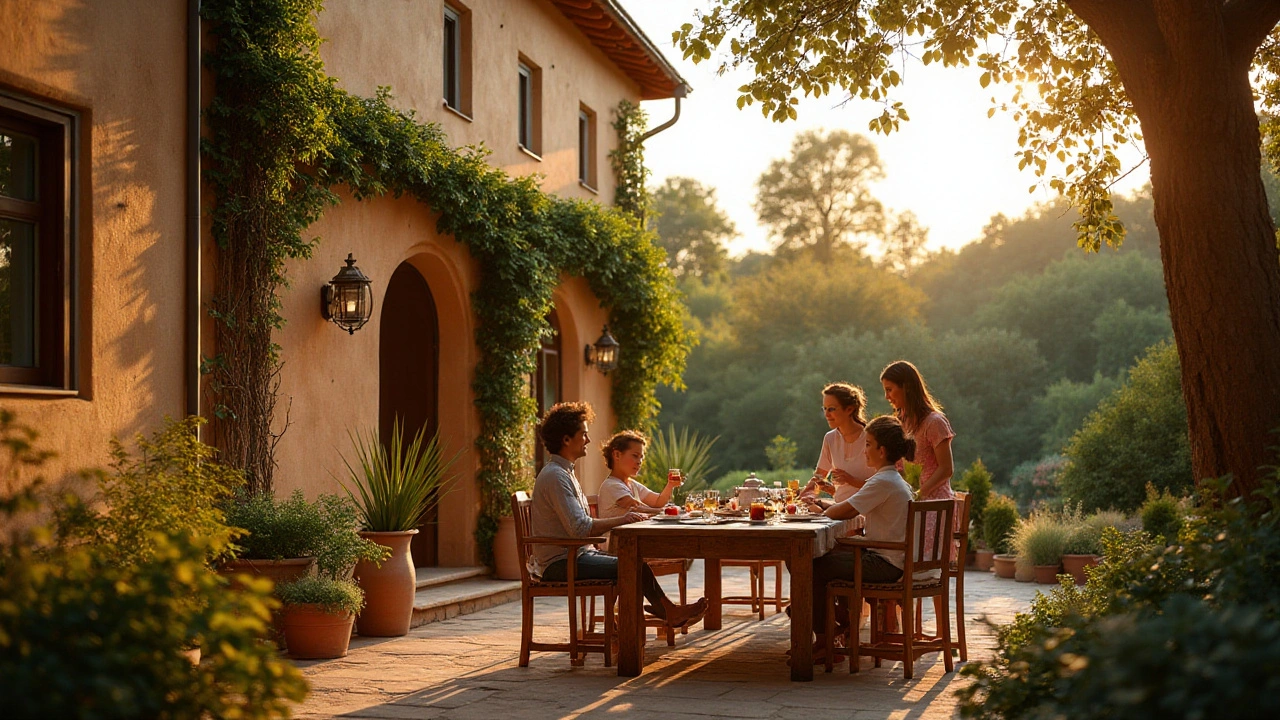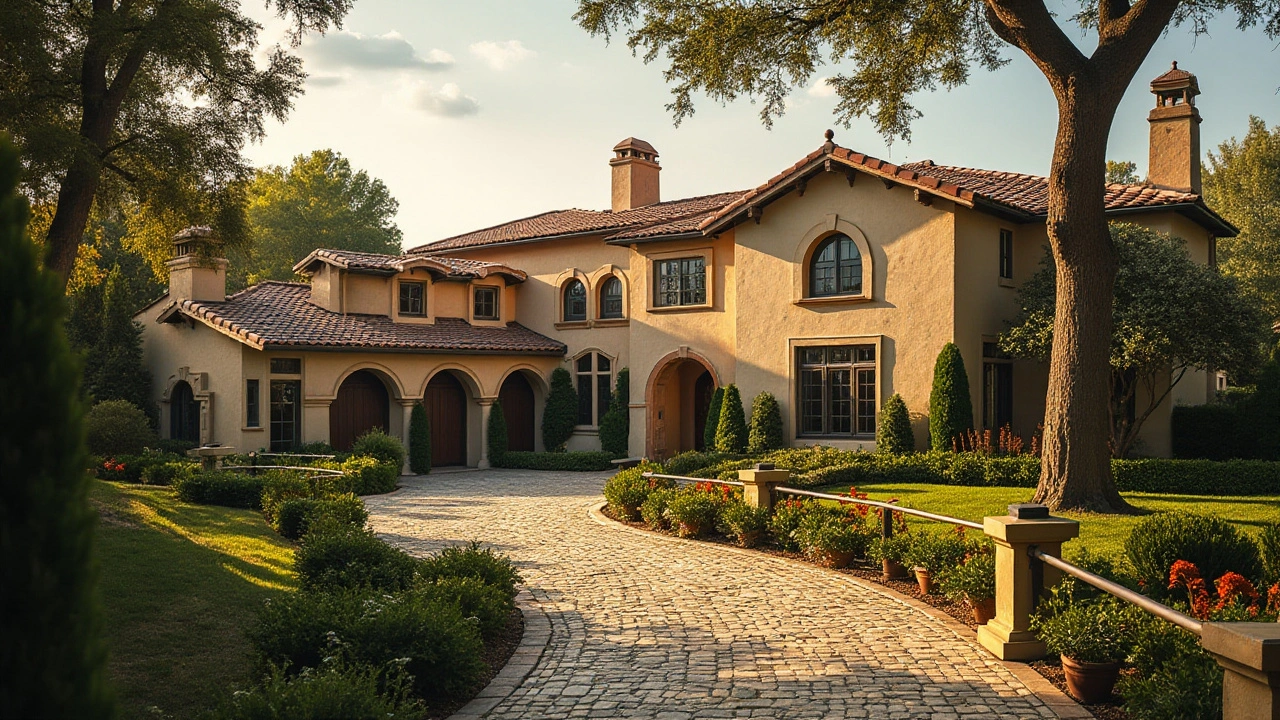Mediterranean architecture: warm, simple, and built for sun
Three things make Mediterranean architecture instantly recognizable: white or pale walls, red clay roofs, and a chill outdoor life. You see it on postcards from coastal Spain, Italy, Greece, and North Africa. The style grew from practical responses to heat, wind, and light. If you want a home that feels like a permanent vacation, this style gives that without fussy details.
Mediterranean homes use a small set of materials that work well in hot climates. Thick stucco or lime plaster keeps interiors cool. Low-pitched roofs with terracotta tiles shed sun and look classic. Wood beams and wrought iron add texture without trapping heat. These materials make maintenance easier in salty coastal air compared with delicate finishes.
Key features to look for
Start with the roof. Clay tiles are the signature element and also protect from strong sun. Arches over windows and doors soften the façade and create shaded spots. Deep porches and loggias extend living space outside. Small, high windows cut glare while letting breezes pass through. Courtyards with fountains are common because moving water cools the air and masks street noise.
Color choices are simple and functional. White or pale ochre reflect light. Earthy tones tie buildings to the landscape. Blue or green shutters add coastal flair and help control sunlight. Details like carved wood doors or tile mosaics give personality without overcomplicating the design.
How to adapt Mediterranean style today
Want the look but not a full rebuild? Start with color and roof material. Swap dark shingles for terracotta tiles or tile-like alternatives. Repaint walls in warm neutrals. Add an arched entry or a simple pergola to create shade. Replace heavy curtains with shutters or blinds that open for cross-ventilation.
Landscaping matters. Drought-tolerant plants—olive, rosemary, lavender—match the style and cut watering. Gravel paths and terracotta pots feel authentic and lower upkeep. A shallow fountain or water bowl can change the whole vibe without huge cost.
Inside, choose plastered walls, exposed beams, and stone or large-format tile floors. Keep layouts open so breezes move through. Mix rustic wood furniture with iron accents. Use textiles in natural fibers and warm colors for a relaxed feel.
Energy-wise, Mediterranean design already helps. Thick walls and shaded outdoor rooms reduce cooling needs. Pair these passive ideas with modern insulation, reflective roof coatings, and efficient windows to make the home comfortable year-round.
Mediterranean architecture is more than a look; it’s a practical answer to climate and lifestyle. Use the core ideas—shade, airflow, simple materials—to get the feel without copying an old villa. Try small changes first and build toward the full effect.
Quick checklist before you start: inspect roof pitch and structure, test wall thermal mass, pick coastal-grade materials, plan for shaded outdoor rooms, choose native drought-resistant plants, and set a budget for tiles and shutters. Consider hiring an architect familiar with Mediterranean or vernacular styles. Small design drawings or mood boards save money and keep the project focused.
Start small, test, and enjoy the light.

Mediterranean Revival Architecture: Unraveling Its Timeless Appeal
Mediterranean Revival Architecture is a style that draws inspiration from the charm and elegance of Mediterranean countries. This article explores its historical roots, key design elements, and practical tips for incorporating its timeless appeal into modern homes. Discover how the blend of stucco walls, red-tiled roofs, and arched windows create a cozy yet sophisticated ambiance. Learn about the cultural influences that shape this style and why it remains popular today.
Read more
Mediterranean Revival Architecture: Impact on Contemporary Design Trends
Mediterranean Revival Architecture continues to be celebrated for its timeless elegance and charm, impacting the way modern structures are designed today. This style is characterized by its stucco walls, red-tiled roofs, and graceful arches, echoing the coastal homes of Spain, Italy, and Greece. It gracefully blends old-world charm with modern sensibilities, offering a warm, inviting, and stylish aesthetic in modern homes and buildings. Understanding its elements can inspire designers to incorporate Mediterranean elements into their projects creatively.
Read more